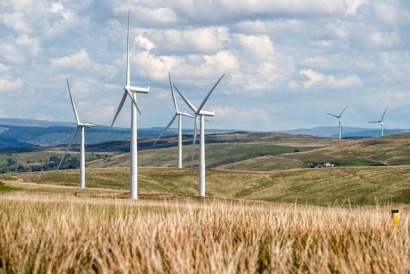
Wind power, a reliable energy source, drives the demand for onshore and offshore wind energies. Technological advancements facilitate efficient energy system management in response to high market demand. Wind turbines offer flexibility, operating at lower speeds to match energy needs and aiding grid voltage and frequency control. These benefits also enhance wind farm and turbine design for easier maintenance, prolonging equipment life, and boosting market demand. Furthermore, the economic and environmental advantages of renewable energy, including emission-free power generation and reduced air pollution, are driving its adoption in the market.
In October 2023, Norway and Poland strengthened their collaboration in the offshore wind industry, with the signing of two memorandums of understanding (MoUs) between the Norwegian Offshore Wind and the Polish Offshore Wind Energy Society (PTMEW). The MoUs will promote knowledge sharing and collaboration on offshore wind projects in both countries.
Competitive Landscape
Prominent players in the global wind power market are implementing various key business strategies to enhance their market presence. These strategies include forming partnerships, engaging in mergers and acquisitions, product innovations, and establishing joint ventures.
For instance, in February 2021, Continuum Wind Energy Ltd. collaborated with an indirect wholly owned subsidiary of a Morgan Stanley fund entity called New Haven Infrastructure to issue its first green bond. The bond, expected to be valued between $500-600 million, was listed on the SGX. The purpose of this endeavor was to refinance project debt for six operational entities and establish wind projects in India.
In terms of location, the wind power market is categorized into onshore, and offshore.
The onshore segment led the market in 2022 due to its cost-effectiveness compared to offshore wind power. Easy installation, greenhouse gas reduction, and economies of scale are demands for onshore wind power.
Larger onshore projects generate more electricity at a lower cost per unit, making it a preferred choice for utility companies and governments aiming to boost their renewable energy capacity. In addition, onshore wind farms typically have shorter development timelines compared to other renewables including offshore wind.
Advancements in Wind Turbine Technology to Support Market Proliferation
On the basis of application, the wind power market is bifurcated into utility and non-utility.
The utility segment dominated the market in 2022 owing to land constraints that make it impractical for non-utility use of wind turbines. Additionally, high costs associated with non-utility applications are driving industries to integrate wind power into the utility sector, which is further boosting the growth of the segment.
Moreover, advancements in wind turbine technology have markedly enhanced the efficiency and reliability of utility-scale wind farms. These technological strides have increased cost-effectiveness, making wind power an appealing choice for utilities aiming to diversify their energy sources.
Rising Demand for Renewable Energy Source to Spur Wind Power Market Development
The imperative to replace conventional energy sources with renewables is a key factor driving the global wind power market growth. Solar and wind energy, once viewed as costly options, now outperform new coal or gas plants in terms of cost-competitiveness. Additionally, future projections indicate that building new wind and solar facilities will be more cost-efficient than operating existing coal or gas plants.
The increasing demand for reliable, clean, and affordable energy is poised to propel market growth. Furthermore, favorable government policies and regulatory frameworks worldwide, aimed at promoting renewable power generation, are expected to boost market growth.
Increasing Installation of Wind Power in APAC to Bolster Market Progress
Asia-Pacific is expected to dominate the global wind power market over the forecast period, driven by the rising favorable government policies and increasing installation of wind power in developing countries such as China and India. These countries have made significant investments and implemented government initiatives to boost industry growth. Specifically, China's onshore wind power industry is predicted to experience steady growth in the coming years as the government focuses on expanding renewable infrastructure and reducing reliance on thermal power to minimize pollution. This process is anticipated to contribute to the regional market growth.

